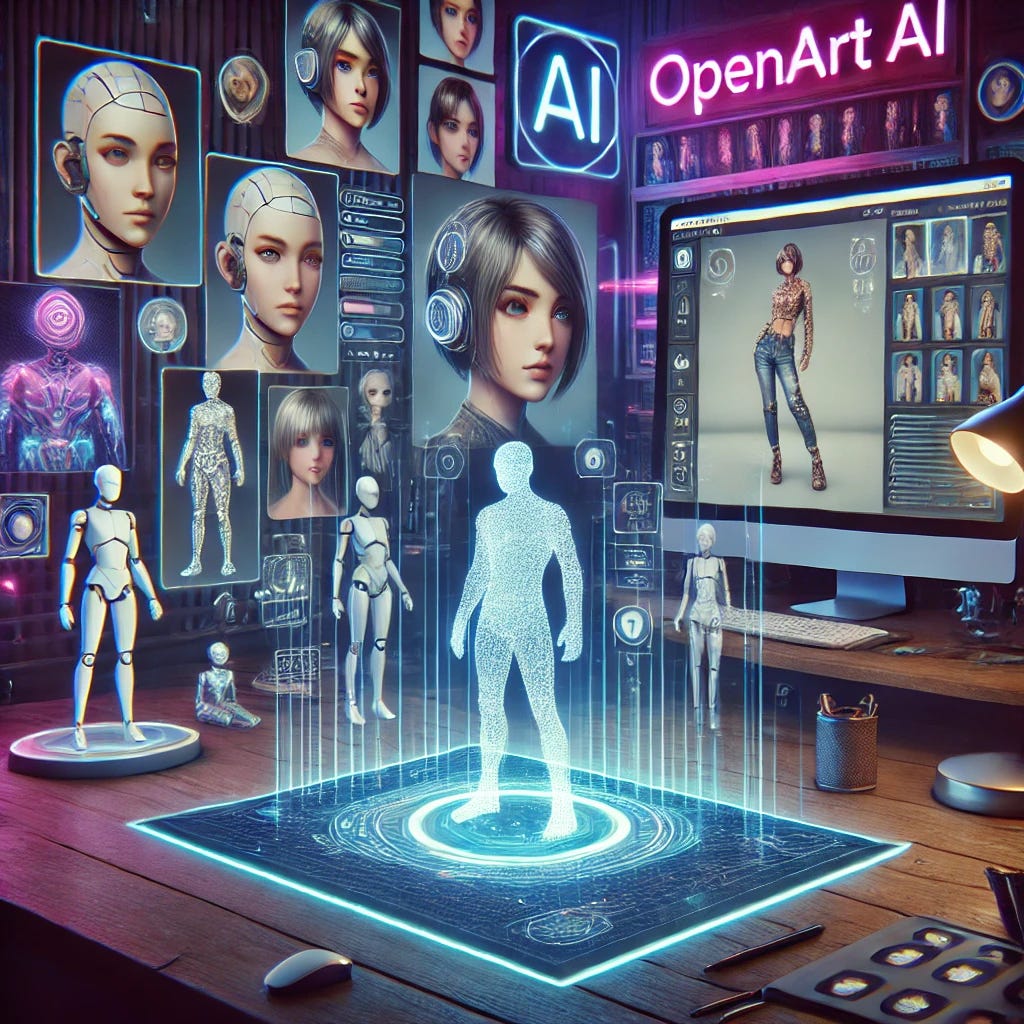Best AI Characters Generator: How OpenArt AI is Revolutionizing Character Creation
Learn how OpenArt AI’s "Characters" feature lets you create, save, and reuse fully customizable AI-generated characters with different expressions, poses, outfits, and actions—perfect for storytelling
Character creation has always been a challenge for digital artists, writers, game developers, and marketers. Ensuring consistency across multiple images, poses, and outfits is essential for storytelling, branding, and design.
OpenArt AI is changing the game with its innovative "Characters" feature, allowing users to generate, customize, and save unique AI-created characters for any creative project.
Unlike traditional AI tools that struggle with consistency, OpenArt AI introduces a character training system, ensuring that characters retain their distinctive appearance across expressions, poses, outfits, and actions.
One of its most groundbreaking features is Pose, which provides full control over body positioning using a 3D mannequin. This allows users to adjust joints, angles, and perspectives, ensuring natural, dynamic character placement in different scenarios.
Additionally, OpenArt AI-generated images can be used for both commercial and non-commercial purposes. However, users should always check the latest AI policy guidelines to ensure compliance with platform terms.
Creating and Managing Characters in OpenArt AI
The Characters feature in OpenArt AI is designed for full character consistency, making it possible to create, save, and recall characters with different expressions, poses, outfits, and behaviors. Here’s how to get started:
1. Accessing the Platform
To begin, visit the official OpenArt AI website and log into your account. Navigate to the Characters section to start creating a new AI-generated character.
2. Creating a Character
OpenArt AI provides two methods for character generation:
Text-Based Creation: Describe your character in detail. Example:
"A young woman with curly red hair and green eyes, wearing a vintage blue dress."Image-Based Creation: Upload a reference image, and OpenArt AI will generate a character that closely resembles it.
3. Customizing the Character and Defining Key Features
Before proceeding, assign a unique name to your character. This allows you to recall it easily for future generations by simply entering its name in your prompts.
Defining the Core Features
Your character description should include only the essential, permanent traits that will remain consistent across all variations. Key details to specify include:
✅ Physical attributes: Gender, age, eye color, nose shape, hair type, and hairstyle.
✅ Defining features: Scars, tattoos, unique accessories that will always be present.
🚨 Important Note: If you want your character to sometimes appear with an accessory—such as a yellow helmet—it is best not to include this in the base description. Instead, describe only the fundamental features and add accessories later as needed.
Choosing the Visual Style
Once the description is complete, OpenArt AI allows you to select a visual style. Some available styles include:
Photorealistic
Digital Art
Cartoon or Anime
Video Game Character Styles (e.g., GTA, Cyberpunk, etc.)
After selecting the style, OpenArt AI will generate multiple character variations. You can:
✅ Discard unsatisfactory results
✅ Regenerate new options
✅ Approve the version that best matches your vision
Once you finalize the design, OpenArt AI will take approximately 10 minutes to fully create the character.
4. Using Your Character in AI-Generated Images
After creation, you can immediately start using your character in different scenarios. Simply open the prompt editor, enter the character’s name, and describe the scene. Examples:
"Emily, playing soccer on a green field."
"Emily, playing guitar by a warm fireplace."
"Emily, sitting under a tree, enjoying a sandwich."
With OpenArt AI, the only limit is your imagination. The system adapts your character to different actions, backgrounds, and compositions while maintaining visual consistency.
5. Saving Your Character
Once your character is finalized, save it to your OpenArt AI library. This allows easy access for future use, ensuring that your design remains available for additional customization.
6. Recalling and Customizing Your Saved Character
In the library section, you can select any saved character and make modifications to adapt it to new creative needs.
Main customization options include:
✅ Modifying Poses
Use the Pose tool to adjust the character’s position and posture with the 3D mannequin, providing full control over body alignment and gestures.
✅ Changing Facial Expressions
Generate different emotional states for your character, such as happiness, sadness, anger, surprise, or worry.
✅ Adjusting Clothing and Accessories
Change outfits and accessories to fit different settings, styles, or storylines.
7. Integrating AI Characters into Your Creative Projects
Once finalized, your character can be used in various creative fields, including:
Illustrated books and storytelling
Social media avatars and virtual influencers
Video game development and animations
Marketing materials and branding campaigns
Educational content and business presentations
This versatility makes OpenArt AI an ideal solution for artists, designers, and content creators who require character consistency across different media formats.
Join My Newsletter for AI Insights and Expert Tips
If you're interested in AI-generated characters, digital storytelling, and creative automation, subscribe to my newsletter for exclusive insights.
What can you find in my upcoming Openart publications?
Advanced strategies for maximizing OpenArt AI and other generative tools.
Expert tips and tricks to enhance AI-generated images.
Exclusive tutorials and industry updates on cutting-edge AI design techniques.
AI technology is evolving rapidly, and staying informed is the key to gaining a competitive edge. Subscribe today to stay ahead in the world of generative AI.


